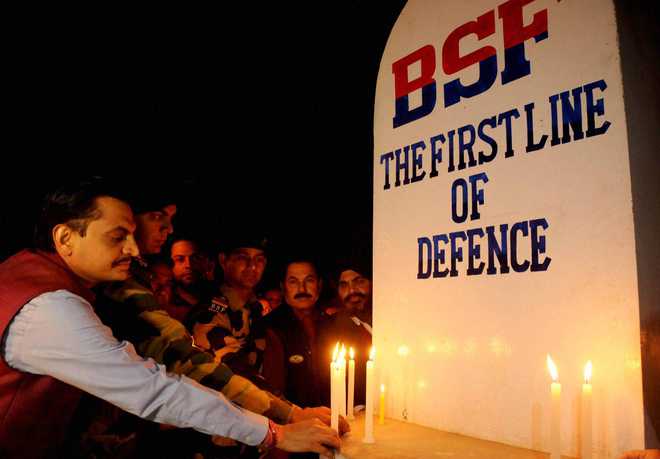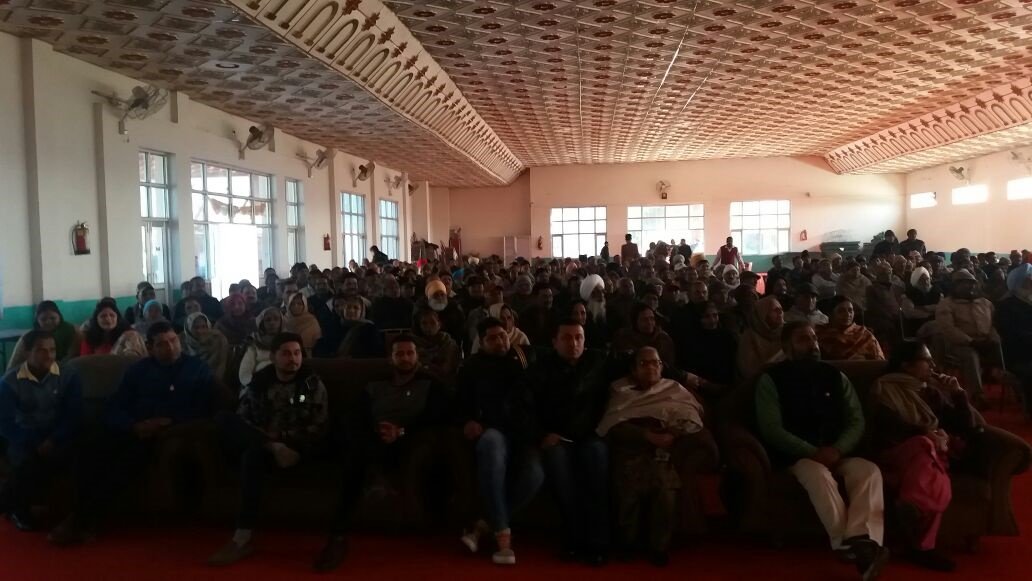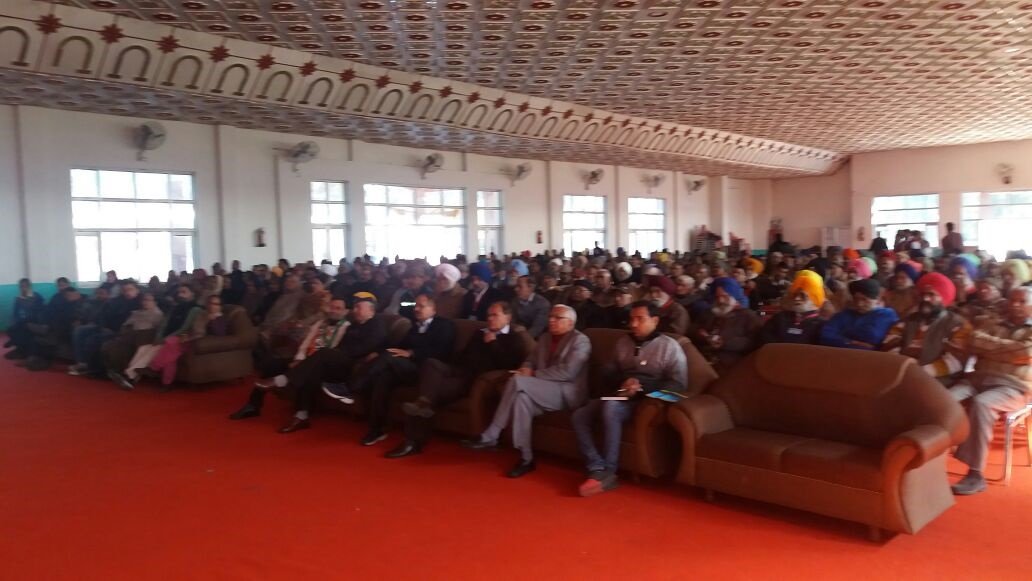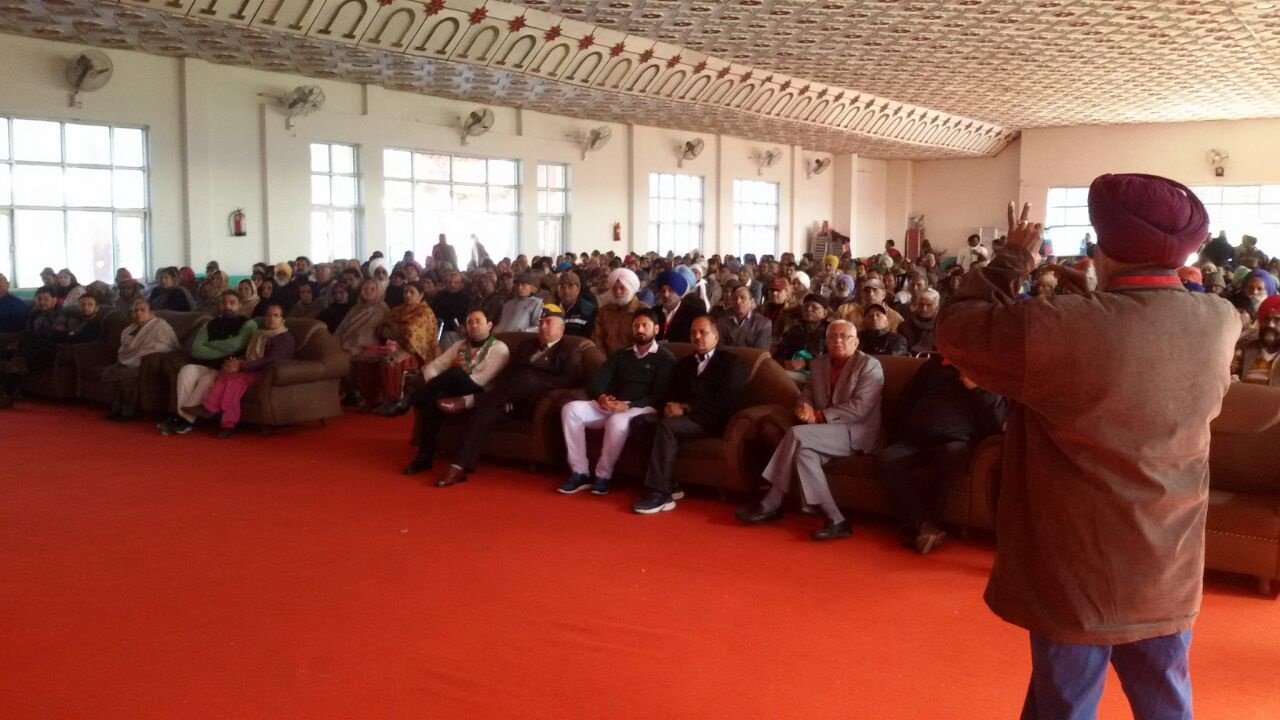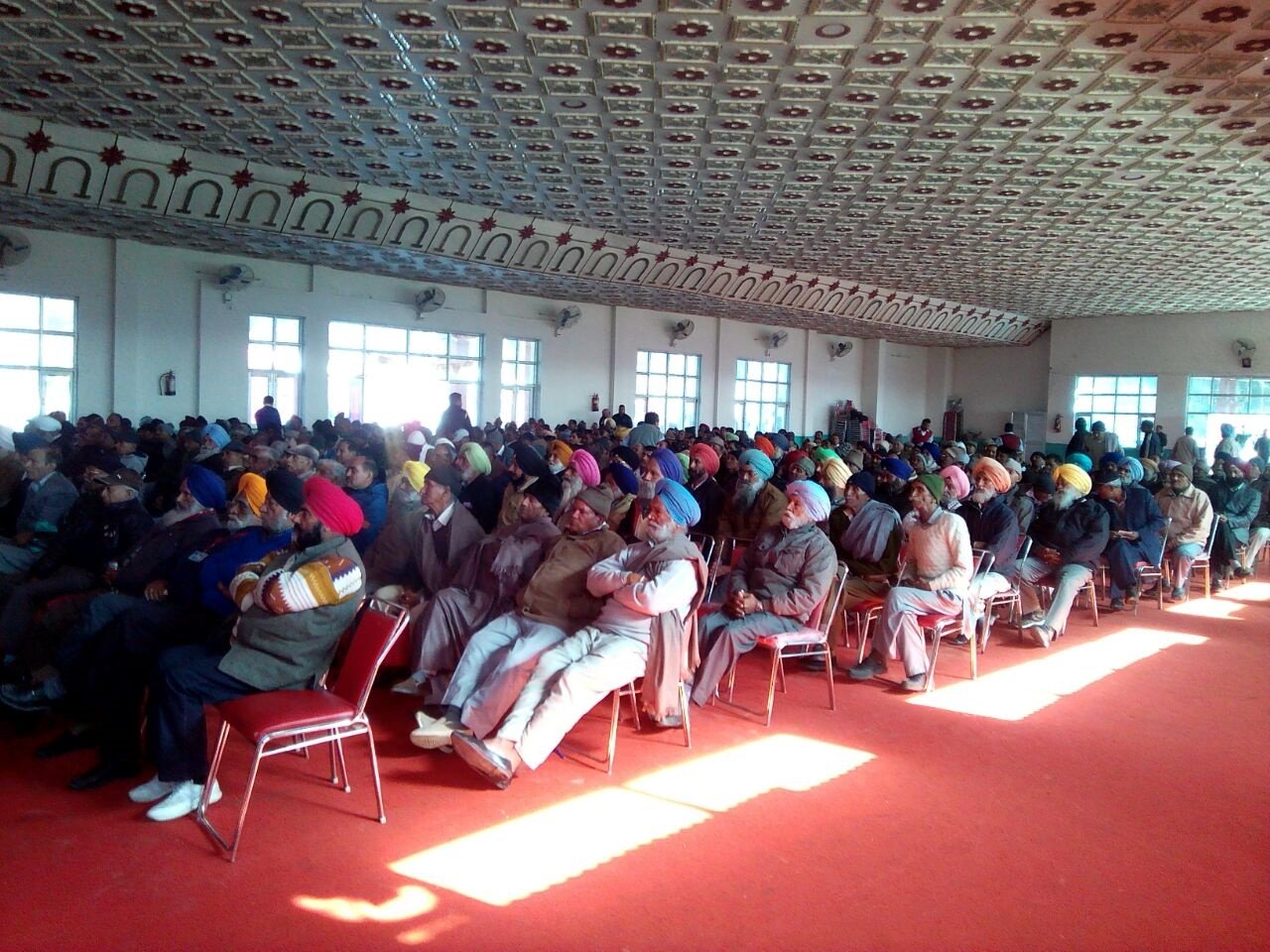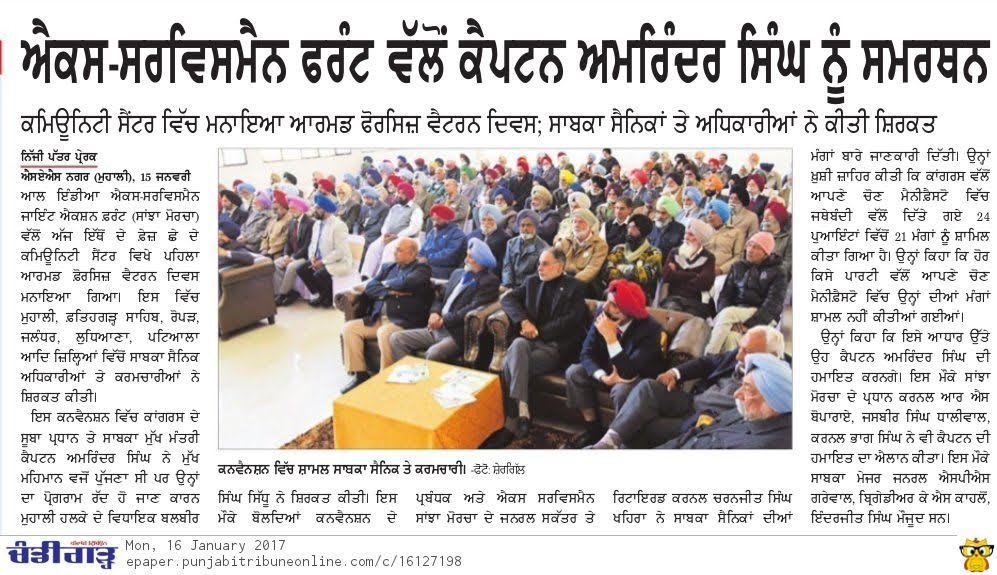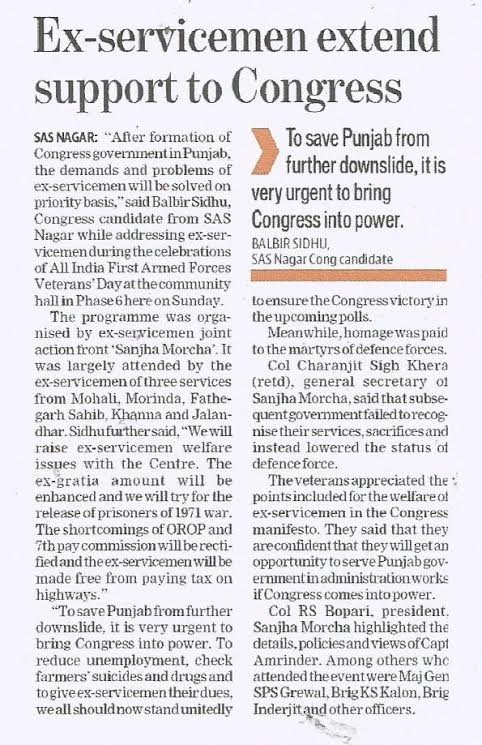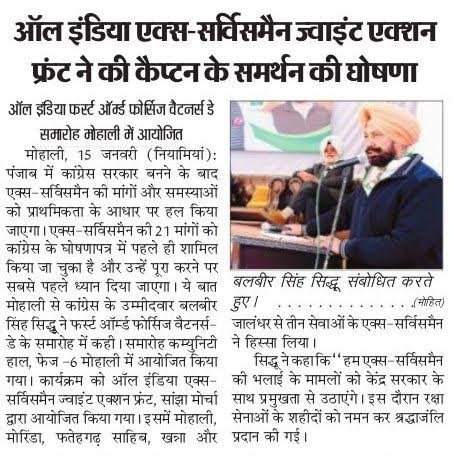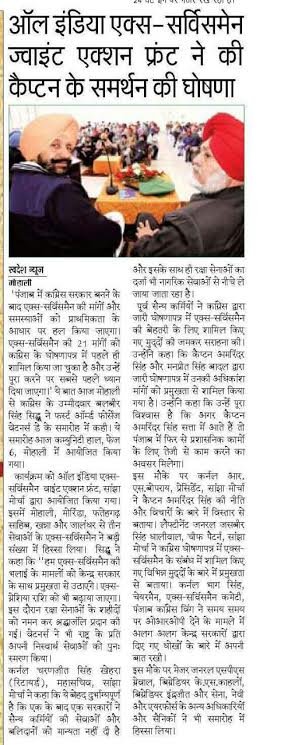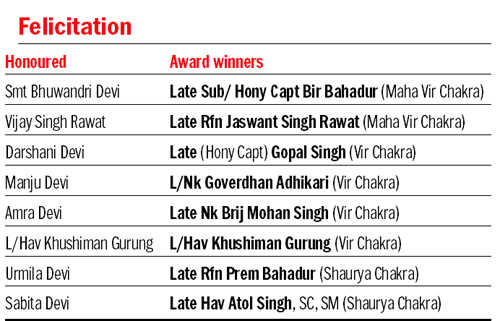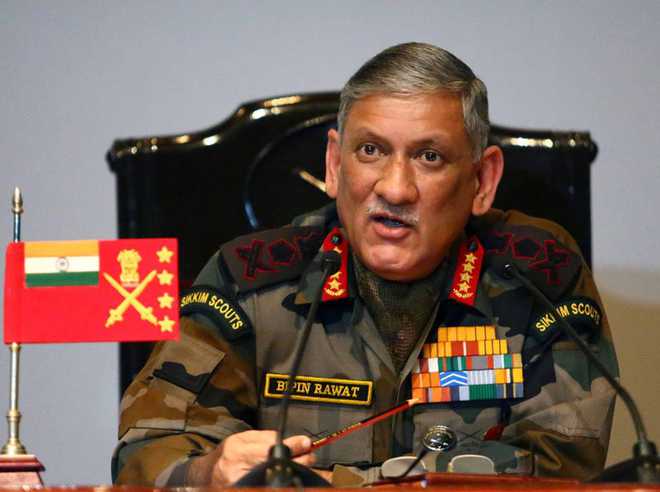Shot at, jailed, assaulted, branded a deserter. All this for exposing his seniors in a theft of seized gold. After 26 years of a traumatic ordeal, the army officer has been reinstated

Sometime on April 11, 1991, an army vehicle making its way from Kupwara to Srinagar pulled to a stop. The driver got out and an armed soldier leaned into the vehicle from the other side and said, half-inquiringly…“Lieutenant sa’ab?” He just wanted to confirm whether the one riding shotgun was indeed Second Lieutenant Shatrughan Singh Chauhan. Upon receiving a positive response, without a further word, the soldier (later identified as a sepoy)emptied the clip of his AK-47 assault rifle in the direction of the passenger seat. A sole bullet from the arbitrary spray created a hole in Chauhan’s left flank at entry—two inches below his left ribs.
Randomness can have both happy and cruel outcomes. From the young second lieutenant’s view, the bullet traced a lucky trajectory, going glancingly through a portion of his torso, spilling out some of his guts as it exited hardly an inch to the left of his navel. This was the early 1990s—militancy in Kashmir was young and happening. The gunfire drew the immediate attention of a nearby Border Security Force (BSF) vehicle, whose jawans chased the retreating men, assuming they were militants. The chinar leaves overhead would have been in their spanking summer green as Chauhan slumped from the vehicle to the ground and stumbled in a trail of blood and guts towards the BSF post, losing consciousness on the way.
Almost 26 years later, the officer recalls the episode with none of the bitterness gone. “It was a soldier from my battalion. He had been ordered to kill me,” claims Chauhan, lifting up his shirt to display the scar that remains, as he sits at his ancestral home in Mainpuri, Uttar Pradesh. In the grand tomes of military history, that shooting itself may not have qualified even as a footnote. But the sequence of events since that day ensures that it may come to influence, through the force of precedence, a whole domain that’s opaque to the outside world: the semi-autonomous world of Indian armed forces’ law.
How did the officer get caught in a situation where his own men put a bullet into him? The backstory is as bizarre as its legal sequel. It all started on April 11, 1990—exactly a year before Chauhan was shot—when his unit seized 147 bars of gold during a routine search operation. Those gold bars (most probably smuggled across the border to fund militants) have since disappeared; as per records, last seen by a sepoy, allegedly being stashed into standard-issue blankets by Chauhan’s superiors. But they left a trail of blood and the old malaise of systemic injustice followed in its wake—what the Armed Forces Tribunal (AFT) has described as an “honour killing of the career and ambition of a young commissioned officer”.
It was a protracted trial by fire, and it came in two flavours. One was official. There was a court-martial for desertion—which carries a death penalty—and for theft, which led to a dishonourable discharge. There were several inquiries, initiated by authorities including the chief of army staff (COAS), two defence ministers, a parliamentary committee and so on. (This included the classic inversion in which the shooting was converted into a suicide attempt.) Outside of all that, allegedly there was another unsuccessful attempt at murder and a brutal assault by superiors.
It took over a quarter century before things could end on a happy note for Chauhan. His tortuous legal battles have finally culminated in a recent verdict by the Lucknow bench of the AFT, which accepted his version of the story, reinstated him to the rank of Lt Colonel and awarded him costs of Rs 4 crore and a further Rs 1 crore to be paid into the Army Central Welfare Fund. The bench of Air Marshall Anil Chopra and Justice (retd) D.P. Singh also directed that an FIR be lodged to probe the murder attempt using the AK-47. Further, that the COAS should probe the disappearance of the 147 gold biscuits and act against the officers who persecuted Chauhan.

Tribunal has ordered an FIR to probe the attempt to murder Chauhan and the loss of 147 gold biscuits seized in a 1990 raid.
The AFT noted that the role of his superiors, including the General Officer Commanding-in Chief (GOC-IC)—the highly-decorated Lt Gen Mohammad Ahmed Zaki—commandant Colonel K.R.S. Panwar and associates, “seems to be not up to mark and suffers from extraneous considerations”. Zaki, approached for his response, still sticks by the suicide story (see interview). As for Panwar, Outlook sent him a detailed questionnaire, but he declined to comment on specifics. All he would say is that “Chauhan has taken the whole country for a ride…and 99 per cent of what he’s saying is falsehood and lies. The government is fighting (the case), and might appeal. Please ask them for comments.
But a different narrative emerges elsewhere. A fitting description is in the handwritten summary of evidence by Col K.S. Dalal and presented before the AFT. “The case is fabricated, and the people who had actually been apprehended for offences committed on 11 Apr 90 were made witnesses, with the only difference that those offences were now put on Lt Chauhan,” it said. “L/Nk Anil (was) caught red-handed lifting money and so he played the main role. Nk Kailash was apprehended with stolen money. It was put on Lt Chauhan. Sep Lakhan was involved in molestation, he put the blame on Lt Chauhan. As the days passed, stories were fabricated and evidence interwoven. However, discrepancies remained, discrepancies which cannot be explained.” For instance, the evidence offered by two witnesses did not match with each other’s—witness depositions seemed fairly haphazard. “The truth has got buried in the rumour statements and contradictions between witnesses.”
Despite the tribunal’s favourable ruling, success is still a few hard steps away for Chauhan. The army has to actually reinstate Chauhan—and probably offer him a retirement scheme. This is of course just a formality, in terms of his actual career. Some of his batchmates are now brigadiers and major generals. At 55, Chauhan now runs a group of educational institutions around Mainpuri and even contested the 2014 Lok Sabha elections on a BJP ticket from that constituency (eventually losing to Mulayam Singh Yadav). “What would I do in the army at this age?” asks Chauhan, poised between posters of Field Marshals Sam Manekshaw and K.C. Cariappa, hanging on the outside wall of his school’s office.
Apart from the reinstatement, the army and police have to investigate the conspiracy behind the attempt to murder, assault and theft charges levelled by Chauhan against his senior officers. The army can appeal to the Supreme Court, but the overwhelming evidence in Chauhan’s favour, detailed in the 300-page AFT order, may not evoke a sense of confidence in government counsel. Outlook has reviewed the AFT order, the army’s inquiry reports, court-martial and summary of evidence testimonies and documents, the report of the parliamentary committee on petitions and other material documents such as official letters, medical reports, Right to Information (RTI) replies and so on.
***
This was hardly the life Chauhan had in his mind’s eye back when his family gave him a grand send-off after he was commissioned as a second lieutenant (a rank now redundant) of the Indian army, posted with the 6th Rajput Regiment. He was, after all, the household’s first officer in three generations of soldiers, all of whom had served the same battalion. Also, a paternal uncle had retired as a subedar major with the military police and a cousin is a serving colonel in the Artillery Regiment.
The unforeseen twist that was to change his life came pretty early: a mere 12 days after Chauhan had joined service in the spring of 1990. March was just coming to close when, after post-commissioning training and a leave, Chauhan took up his posting near the LoC in Kashmir. On April 11, with around 300 soldiers, Chauhan and other officers were deployed on a house-to-house search operation in Lakshmanpur, Batamaloo, in Srinagar city.
During one of the searches, Lance Naik Anil Kumar was caught stealing money and gold jewellery from civilians. The episode was witnessed by civilians, CRPF personnel and other soldiers (to which they testified later in court). Col Panwar, the commanding officer, was informed and, Chauhan says, he punished Kumar with a caning and dismissed him from the raids for the rest of the day. Later, Kumar, who had a criminal record, was used as a sole witness to establish the false allegations of theft and molestation against Chauhan.

Mental pain and losing his career have not dissuaded Chauhan
Around 2 pm, Chauhan’s platoon discovered the 147 gold biscuits (bearing the British ‘Johnson Matthey’ brand) weighing around 30 kg from a house. The price of the haul would be worth around Rs 96 lakh at 1990 prices and Rs 9 crore at today’s prices.
The men in that house—a local named Lone and four other youth—were taken into custody and the seized gold biscuits were laid out on an army jeep for display. According to Chauhan and eyewitness testimonies by soldiers, Col Panwar sent him to take down a Pakistani flag strung on a nearby tree. When Chauhan came back, the locals had been released. Soldiers also testified that Panwar took the gold biscuits in his jeep back to the base. That evening, the unit celebrated the seizure with two pegs of rum each for the jawans and a party at the mess for the officers.
Ex-defence ministers George Fernandes and Sharad Pawar did help Chauhan. In ’08, a Lok Sabha panel took up his case.
“The next day (April 12), when the unit was departing for another day’s operation, Col Panwar said we should not return empty-handed like the previous day,” says Chauhan. “I was flabbergasted and remarked that a seizure of 147 gold biscuits could not be described as empty-handed. The colonel replied with the words ‘What gold biscuits’, and admonished me for insubordination. That broke my morale.”
The only people who denied this exchange (or even that such a meeting took place) were the officers ranked between Chauhan and Panwar—2nd Lt Rajiv Shukla, Lt Col M.S. Rawat, Captain Amit Hajela and Major Mukesh Sangoori. These were the very officers, Chauhan alleges, who assaulted him, implicated him in false charges and fabricated evidence during the court-martial. That night, Chauhan claims, the first plan to kill him was set out. He claims that a sentry was ordered to shoot him, as he appeared to check the guard duty at 1 am. Luckily for Chauhan, he evaded death by reporting for duty two hours early. “The Captain called me later and asked why I had not checked the duty. I told him that the sentry post register, which I had signed, would verify that I had monitored the post,” says Chauhan.
The next day, April 13, Chauhan and Lt Shukla went to Col V.P.S. Chauhan, the officer in charge of operations and intelligence. Not finding him at home, Chauhan told his wife that they had recovered 147 gold biscuits and this fact was being suppressed. Col V.P.S. Chauhan also arranged for them to meet Lt Gen Zaki, who refused to hear his complaint. Col Chauhan did not respond to calls to join Chauhan’s court-martial. The colonel’s wife, Indu Chauhan, later confirmed this in an affidavit to a government-instituted court of inquiry in 1993, but it was already too late for the young officer. On returning to the base, Lt Shukla allegedly informed Col Panwar that Chauhan had reported against them.
That night, Col Panwar was missing from dinner at the mess. A jawan went to inquire if the colonel was coming for dinner and later told the court he saw the officer busy stashing the gold biscuits in a quilt. During his cross-examination, Panwar had asked this soldier to describe the gold biscuits. “I don’t know, sir. I just saw them for a few seconds. You have seen them closer and for longer,” he quipped.
In the 1992 Hollywood blockbuster, A Few Good Men, Tom Cruise played a navy lawyer who defended two soldiers accused of fratricide during a ‘Code Red’—a brutal beating used to discipline a soldier. Indian soldiers call it a ‘kambal (blanket) parade’, used since the colonial era. On the night of April 13, Chauhan was given a kambal parade. The blanket dulls the surface impact and thus largely prevents external injuries, but Chauhan still has to take regular treatment for the severe, long-term damage he suffered that night. He blamed Hajela, Sangoori and Rawat for the assault and says at least 10 people saw him after the assault, including a soldier who testified to having cleaned Chauhan’s blood off the sheets.
The second day after that brutal beating, on April 15, Panwar sent Chauhan on leave, and he flew down to his home in UP. His world turned topsy-turvy, and his mind in a mess, Chauhan was admitted in a suicidal state to the Air Force Hospital in Kanpur briefly before being transferred to the Command Hospital in Lucknow, where he was diagnosed with neurotic depression and anxiety due to the assault. In the meantime, his father approached the army headquarters in New Delhi for help.
At this stage, the heavy hand of the system came into play. An order was issued from Kashmir and some soldiers were sent to bring Chauhan back for treatment at a hospital in Udhampur in May 1990. A backdated report was used to show that Chauhan had gone AWOL (absent without official leave) and this was treated as akin to ‘desertion during war’—a charge that can even invite the death penalty as per the Army Act 1950. A charge of desertion is usually announced after 30 days of a soldier going AWOL, following a court-martial. The letter issued by his regiment declared Chauhan a deserter through an antedated court of inquiry on April 13, a day before the same officers had signed his leave papers. The documents, produced during the court-martial and later before the AFT, spoke their own truth.
While soldiers were transferring Chauhan to the hospital in Udhampur, 2nd Lt Shukla was spotted in Lucknow. Chauhan’s wife shot off letters to the government and the then COAS, General S.F. Rodrigues. The COAS directed the GOC, Lt Gen Mohammad Zaki, to investigate. Zaki, in turn, turned over the probe to the very officers against whom Chauhan had made allegations of assault and theft.
On June 7, 1990, Lt Col Rawat and Lt Shukla went to Jammu and took custody of Chauhan the next day. They planned to take him to Srinagar and then to the regiment’s station near the LoC. In Srinagar, a sepoy allegedly warned Chauhan that he’d be killed en route. The custody was illegal. Col Mukhopadhyay, registrar of the Udhampur hospital where Chauhan was admitted, later testified that the documents used to transfer him were forged. Chauhan says Mukhopadhyay helped him escape by driving him down in his car to Jallandhar from where he escaped back home.
Meanwhile, the army’s adjutant general directed that Chauhan be admitted at Delhi’s Army Hospital and handed over the inquiry to Maj Gen R.S. Taragi. In his report to the COAS, Taragi gave weight to Chauhan’s allegations and recommended a high-level inquiry. Rubbishing the counter-charges levelled against Chauhan to discredit him, he also put it on paper that he feared Chauhan may be eliminated.
The COAS then directed an inquiry, but the roulette wheel turned against Chauhan again. A summary of evidence was conducted twice. The first one found no reason to prosecute Chauhan. Then, without any explanations for its necessity, a second one was ordered. On its findings a brigadier recommended a summary court-martial to try Chauhan for going AWOL, which Chauhan says was described as desertion during war. A summary court-martial is only conducted during war time and the maximum sentence for desertion is death.

The order convening the court martial was itself illegal—it named the adjudicators but not the accused or the charges against him.
All the extreme disorientation of war—and a gathering sense of doom—would likely have been felt by Chauhan as he was taken to a brigade camp at Niari near the LoC in Kashmir for his court-martial. But doom of another sort was lurking too. It was on the way for a medical checkup prior to the proceedings that he was shot at.
Chauhan regained consciousness in the 92 Base Hospital, Srinagar on April 15, and he was operated upon four days later. The aftermath of the near-death experience contained its own elements of drama. As he recuperated at the hospital for a month, Chauhan’s family was initially not allowed to meet him—it took the Supreme Court to allow their writ of habeas corpus before that came about. But while the petition was pending, Chauhan’s father, being an ex-serviceman, managed to sneak in. His wife too dressed up as a nurse and spent a few nights in the hospital to attend to him.
As Chauhan was discharged on May 14, the stage was set for the legal drama—the court-martial commenced in three weeks, on June 7, 1991. Already, the scales seemed tipped against him—no FIR had been lodged for the murderous assault against him despite his father complaining to the police superintendent in Srinagar. But there was more weight against Chauhan. The convening order of the court-martial itself was illegal—against rules, it mentioned the names of the adjudicators but not of the accused or the charges against him. (The AFT was to note later, “…This might have been done to conceal the proceeding from Army Headquarters. This goes to the root of the matter…”)
What’s worse, Chauhan claims he was tried without being allowed any counsel. “It was conducted in Niari, just five km from the LoC,” he says. “Which lawyer would come there to defend me?” The court-martial made no mention of gold biscuits. At least one of the judges, Captain Manveet Singh, tried to make the proceedings fair and wanted to allow Chauhan to ask all pertinent questions. But another judge, ranked senior to Capt Singh, wouldn’t have any of it. The conflict nearly escalated into blows. “They lifted chairs to hit each other,” recalls Chauhan.
Capt Singh also opposed the court-martial since Chauhan had no defence counsel. When the court convened after 10 days, says Chauhan, Lt Gen Zaki had even passed an order removing Singh and replacing him with another officer. This dubious trial found Chauhan guilty and imposed a sentence of seven years’ rigorous imprisonment and cashiered him from service.
After the court-martial, when Chauhan sought action for the attempt on his life, he got a letter informing him that there was instead going to be another court-martial for “attempt to commit suicide”. When Chauhan replied he would defend himself, the charges and proceedings were dropped. The AFT notes, “…. Either the respondents were frightened and apprehensive that if the truth was unearthed it would disrepute the army or some pressure must have been exerted to save someone’s neck.”
After he served a sentence for around eight months in Srinagar, the COAS commuted Chauhan’s sentence to the time already served. Chauhan filed a writ against his conviction with the Allahabad High Court in 1993 and it remained pending for 19 years till it was transferred to the AFT in 2012. In between, Chauhan had called for the court-martial records, but the army claimed the records had been destroyed within 2-3 months, as opposed to the statutory 10 years. Later, an RTI helped ‘locate’ the records—and all the crucial testimonies and evidence collected during the court-martial came to light.
Chauhan recalls meeting Lt Gen Zaki on April 12, 1990, itself, to complain about the gold biscuits but Zaki “was livid and refused to accept the truth about the gold biscuits and instead questioned how a recent inductee could find the temerity to complain about his senior,” he says. Lt Gen Zaki could have verified it with the jawans who had witnessed the seizure. Many of these same jawans had testified in court and during the court-martial, authenticating Chauhan’s claims.
The dramatis personae who dotted Chauhan’s 26-year battle for justice weren’t all villains. There were Maj Gen Taragi and Col Mukhopadhyay, and many others like them. The AFT commended Col Dalal and Manveet Singh as ‘real heroes’ for not buckling under pressure during the court-martial. Other inquiry officers too had given favourable orders, though all in vain at that stage.
Former defence ministers George Fernandes and Sharad Pawar too helped greatly. Even as an MP, Fernandes wrote letters and advocated Chauhan’s case. Convinced of the officer’s innocence, Fernandes also published a book titled Lt S.S. Chauhan vs The Indian Army. It was through such efforts, involving other MPs too, that the parliamentary committee came about. In 2008, a Lok Sabha committee of petitions took up Chauhan’s case. It interviewed senior officers and bureaucrats and concluded that Chauhan should be reinstated and his allegations properly probed.
At the AFT, two benches recused themselves from hearing Chauhan’s case. The principal bench finally agreed to take it up only if Chauhan stayed silent throughout the proceedings. Chauhan undertook the vow solemnly and broke it only on the judge’s request, while the court was examining evidence of the shooting in which he had nearly been killed.
The tribunal went through charge after charge and set them aside based on hard evidence and testimony the court-martial had earlier ignored. Several contradictions emerged. For example, officers claimed Chauhan stole money, but wrote down two different amounts in two different places. There is also an official record that Chauhan had lunch with senior officers the day after he was charged with stealing. Why, the AFT asked, would officers be dining with a thief amongst them?
The tribunal also weighed the treatment meted out to Chauhan. Besides the assault and the firing, medical reports were twisted and movement orders tampered with, favourable inquiry reports ignored and no principles of justice were followed. The army now says it is “examining” related documents. “Once this is completed, actions against provisions of law will be taken,” an army spokesperson said, adding “we have the greatest respect” for the court judgement. Maj Gen (retd) Taragi recalls meeting Chauhan’s father, but he—like Col Dalal—didn’t want to comment beyond that when Outlook contacted. Col V.P.S. Chauhan is settled abroad, sources say.
The physical and mental pain, the decades of waiting for justice and losing his dream career—all that has not dissuaded Chauhan. His elder son is interning at a government hospital and daughter is a civil servant. He points to a photo of his younger son in an equestrian event. “He’s preparing to be a fighter pilot in the Indian Air Force,” he beams proudly.
By Ushinor Majumdar in Mainpuri and New Delhi


